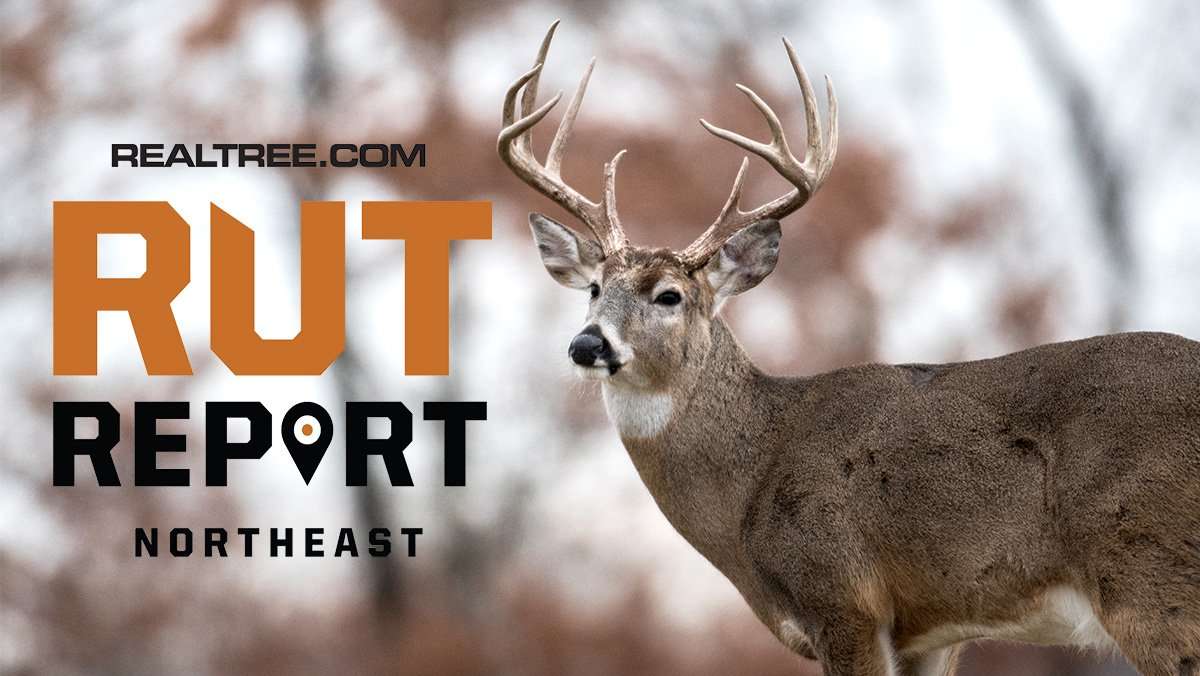The main rut is over, but hunters still holding out for secondary rut action

Like all good things, the rut must come to an end. For a few solid weeks, the woods were alive with bucks bounding after does, throwing caution to the wind. The majority of does have been bred now, and they have gone back to their family groups. Currently, movement is more measured, though there's still enough daylight action to make any sit potentially exciting.
But it's not over just yet. Many parts of the Northeast are about to enter the second rut. Though this period isn't typified by the reckless abandon exhibited by bucks in November, active bucks will be out searching during the day. Many states offer late-season muzzleloader tags, and you should take advantage if you can. Watch the wind, set up near some groceries, and punch some tags. I know I will be.
New York
He was just zombie walking the field when I pulled up on him, deer junkie and former classmate Joe Winski said, describing the big 8-point he connected with earlier this week. The big guy came across a cornfield within 65 yards of Joe at 4 pm, presenting him with an easy shot. He had just been run ragged. You can tell he was exhausted from a long, busy rut.
Persistence paid off for Winski, both in New York and Ohio, as he connected with quality bucks in both states. Like many folks I talked to this year, he noticed movement was spread out throughout the day, and not limited to brief periods. He put in all-day sits whenever possible, and observed plenty of bucks right through lunchtime. He observed enough midday activity that he plans on hitting the woods for a few hours between 11 and 3 whenever possible. And he's not ready to hang it up for the year yet, with aspirations for the second rut that's set to kick off in a few days.
If the rut is moving at 100 miles per hour, the second rut is more like 60, Joe explains. Though big buck activity is greatly reduced, there are still some bruisers on their feet. He'll be on the lookout for another big 'un when muzzleloader opens up at the end of the week. The does are back in their family groups, but there will be some bucks still trying.
(Don't Miss: Try this Deadly Scent Strategy for Late-Season Bucks)
New Jersey
I checked back with Bob Vellucci in New Jersey, who didn't have much to report. It's over here. The deer are moving back to their winter feeding patterns, he says. His cameras are still picking up some activity, with groups of does occasionally having a buck in tow. Hope springs eternal, I suppose.
But most of his buck observations recently have been near feeding areas, with the worn-out bucks looking to put on pounds before the frost gets severe. Bob's not too worried about the health of the local herd, though. It's supposed to be an El Nina winter, so I expect them to make it through alright. There are a few that I've been watching that should be mounters next year.
Reflections on the 2020 Season
By most interpretations, it has been a productive season. Hunters from Maine to Maryland connected with some nice deer. Preliminary harvest reports show folks took a lot of deer so far this year, with numbers buoyed by a large group of new hunters. If you happen to be one of those new hunters, welcome to the club.
The weather was a wildcard, with temperatures ranging from unseasonably warm one day to frigid the next. Nevertheless, primal urges still took hold and the bucks covered some serious ground, even during shirtsleeves days. Still, it was unusual to witness chasing and fighting in 70-degree temps. I don't know if that's something I'll ever get used to, but I sure don't mind hunting in a t-shirt.
EHD definitely played a role in downstate New York's deer herd, with some accounts from Connecticut also showing effects from the disease. Hunters in particularly deer-dense areas who would typically need pitch counters to keep track of all the does wandering past their stands saw significantly fewer deer overall. Hopefully the effects remain localized, and the winter is cold enough to kill off the remaining midges that are responsible for spreading the disease.
There's always next year to look forward to, though there's still plenty of season left for folks like me. Get out there if you can!
Northeast reporter Joseph Albanese hails from New York. He began his career in wildlife management and has worked for multiple state and federal agencies. These days, he writes full-time about fins, feathers, and fur.







